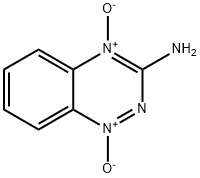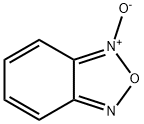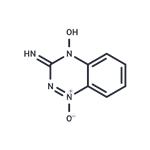Description
Tirapazamine is a hypoxia-activated anticancer agent. It is converted to an oxidizing radical under hypoxic conditions and can induce single- and double-strand breaks in DNA, formation of trapped topoisomerase I- and II-DNA complexes, and other chromosomal aberrations, leading to cytotoxicity. Tirapazamine induces hypoxia-enhanced cytotoxicity in DT40 cells (IC
50s = 1.02 and 4.34 μM in hypoxic and normoxic conditions, respectively). It also induces cytotoxicity in HT-1080 and A549 cells in a concentration-dependent manner under hypoxic conditions.
In vivo, tirapazamine sensitizes tumors to cisplatin in a mouse RIF-1 fibrosarcoma tumor model. Tirapazamine (0.08 mmol/kg) also sensitizes tumors to fractionated irradiation in a FaDu hypopharyngeal squamous cell carcinoma mouse xenograft model.
Chemical Properties
Orange Needles
Uses
Tirapazamine has been used to evaluate its cytotoxic effect on U-251 MG (glioblastoma cell line) cell viability.
Uses
A bioreductive anticancer agent. Selectively toxic to cells under hypoxic conditions. An antineoplastic
Definition
ChEBI: A member of the class of benzotriazines that is 1,2,4-benzotriazine carrying an amino substituent at position 3 and two oxido substituents at positions 1 and 4.
Biochem/physiol Actions
Under hypoxic conditions, tirapazamine is a potent cytotoxic agent that induces apoptosis by inducing breaks in single and double stranded DNA, as well as chromosomal breaks. The compound sensitizes cells to other ionizing radiation and other cytotoxic agents like cisplatin.




